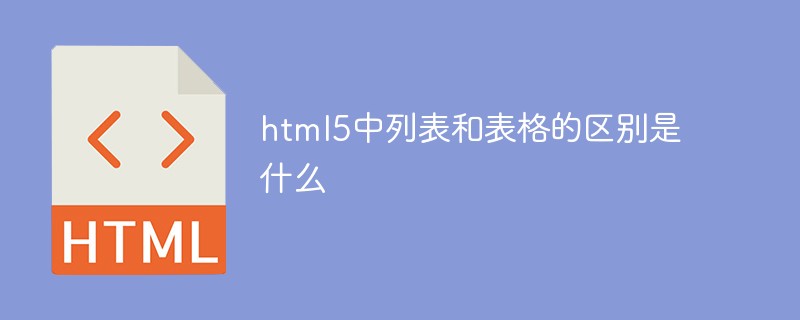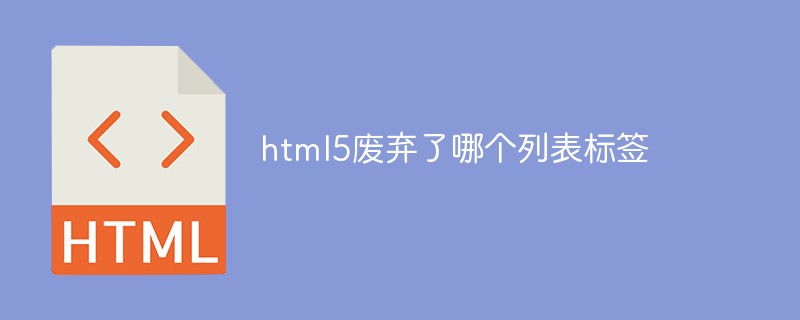At the end of October 2014, W3C (World Wide Web Consortium) officially announced that HTML5 was officially finalized. The technology circle seemed to have discovered a way to break the native APP world dominated by Google and Apple, and published Many articles that preach that HTML5 will truly begin to subvert native (Native) apps have also begun to focus on developing HTML5 and beginning to seize the future of HTML5. So will HTML5 become the next trend? Can the final version of HTML5 really subvert the current hot native apps? Personally, I think there are the following opportunities.

1. The attitudes of Apple and Google
The iOS and Android systems represented by Apple and Google , occupying more than 95% of the market share of mobile systems, and both Google and Apple are loyal fans of native APPs. What you need to know is that the reason why HTML5 or Web APP has not become the main APP implementation method on the mobile Internet is that the advent of the first-generation iPhone in 2007 almost wiped out Web APPs from the mobile Internet. In addition, native APPs have become increasingly popular among users. Interaction is excellent, there is no room for Web APP to survive.
Fortunately, with Android 4.4 released by Google at the end of 2013, the built-in Webview is no longer the crappy Android WebKit browser, but Chromium. After the release of iPhone 5 in 2012, the performance of HTML5 on iOS has been satisfactory, and Safari’s exclusive JavaScript acceleration engine Nitro is no longer so important. However, after the release of iOS 8, Apple wisely canceled it There are restrictions on third-party programs calling Nitro. Now any browser or application calling UIWebview of iOS can use Nitro acceleration. The attitudes of the two major mobile operating system overlords and browser giants have changed, so that the development of HTML5 on mobile phones is no longer restricted, and this change is irreversible and can only continue to move forward. This change is bound to have far-reaching impacts (quoted from "HTML 5 is finally finalized, and eight years later we will talk about how to change the world again" published by 36Kr on November 3, 2014).
Google and Apple also seem to see the advantages of HTML5 in the future. In addition to making some changes in the browser core, they have also made corresponding changes in the operation of the browser. For example, in the Safari browser , you can add a web page to the home screen, and add a Web application to the home screen to quickly access the web page. Perhaps this is setting the stage for future Web APPs developed based on HTML5.
2. The technical limitations of HTML5 itself
Although HTML5 is the only cross-platform that can take advantage of mainstream platforms such as PC, Mac, iPhone, iPad, Android, and Windows Phone language. But its own shortcomings are inevitable. The lack of API, the inability to interact well with mobile hardware, the lack of support for mobile-specific push, and the unsmooth interaction...are all the main factors that prevent rapid popularization in the short term and hinder the development of Web APPs. resistance.
3. Attitude of software developers
From the current point of view, Google and Apple have dominance in the native APP market, so their attitude towards HTML5 has not been It is too clear, there is neither a vigorous development trend nor a complete denial. Based on this, software developers also have different attitudes. One is to continue to retain native APPs and not develop Web APPs; the other is to vigorously develop Web APPs based on HTML5; however, more of them adopt a hybrid development approach. mode, that is, using a native + HTML5 approach for hybrid development, which can use native technology to make up for the shortcomings of HTML5, and also use HTML5 technology to achieve rapid iteration and other functions. At present, most of the platform-based apps or news apps adopt a hybrid development model. However, although the hybrid development model is a major use of HTML5 technology, it is undeniable that it still relies on native APPs to run.
4. Web APP entrance and operating environment
In the early days of the mobile Internet, with the help of browsers, Web APP had a good operating environment and high-quality entrance. But as Web APP was replaced by native APP, native APP established a system + application store model as the acquisition entrance and operating environment of native APP. However, what are the acquisition entrance and operating environment of Web APP? Since the browser kernels are different between different systems, whether support for HTML5 can affect the use and interaction of Web APP has become the core issue. WeChat seems to have provided a good solution. On January 19, 2015, WeChat opened the WeChat web page development toolkit (WeChat JS-SDK) to developers, which allows users to easily develop based on JS-SDK. WeChat's Web-App, and using the WeChat service account to replace the website address, gradually built a Web APP application store and operating environment.
Although the road ahead of HTML5 is long and full of thorns, it is undeniable that with the finalization of HTML5, Web APP will usher in the best development opportunity in the future. With the improvement of hardware processing capabilities, the original performance problems of HTML5 will It will also be solved, and technological improvements will gradually erase the gap with native APPs. With its cross-platform advantage, it will naturally develop greatly. But as for whether it can completely replace the native APP, in my opinion, it is unlikely, just like the launch of web games has not defeated client games. In the future, Web APP will exist in an environment that is suitable for it, and native APP will also exist in an environment that is suitable for it, just like iOS and Android now, they will coexist.
The above is the detailed content of Development of HTML5. For more information, please follow other related articles on the PHP Chinese website!
 html5的div一行可以放两个吗Apr 25, 2022 pm 05:32 PM
html5的div一行可以放两个吗Apr 25, 2022 pm 05:32 PMhtml5的div元素默认一行不可以放两个。div是一个块级元素,一个元素会独占一行,两个div默认无法在同一行显示;但可以通过给div元素添加“display:inline;”样式,将其转为行内元素,就可以实现多个div在同一行显示了。
 html5中列表和表格的区别是什么Apr 28, 2022 pm 01:58 PM
html5中列表和表格的区别是什么Apr 28, 2022 pm 01:58 PMhtml5中列表和表格的区别:1、表格主要是用于显示数据的,而列表主要是用于给数据进行布局;2、表格是使用table标签配合tr、td、th等标签进行定义的,列表是利用li标签配合ol、ul等标签进行定义的。
 html5怎么让头和尾固定不动Apr 25, 2022 pm 02:30 PM
html5怎么让头和尾固定不动Apr 25, 2022 pm 02:30 PM固定方法:1、使用header标签定义文档头部内容,并添加“position:fixed;top:0;”样式让其固定不动;2、使用footer标签定义尾部内容,并添加“position: fixed;bottom: 0;”样式让其固定不动。
 HTML5中画布标签是什么May 18, 2022 pm 04:55 PM
HTML5中画布标签是什么May 18, 2022 pm 04:55 PMHTML5中画布标签是“<canvas>”。canvas标签用于图形的绘制,它只是一个矩形的图形容器,绘制图形必须通过脚本(通常是JavaScript)来完成;开发者可利用多种js方法来在canvas中绘制路径、盒、圆、字符以及添加图像等。
 html5中不支持的标签有哪些Mar 17, 2022 pm 05:43 PM
html5中不支持的标签有哪些Mar 17, 2022 pm 05:43 PMhtml5中不支持的标签有:1、acronym,用于定义首字母缩写,可用abbr替代;2、basefont,可利用css样式替代;3、applet,可用object替代;4、dir,定义目录列表,可用ul替代;5、big,定义大号文本等等。
 html5废弃了哪个列表标签Jun 01, 2022 pm 06:32 PM
html5废弃了哪个列表标签Jun 01, 2022 pm 06:32 PMhtml5废弃了dir列表标签。dir标签被用来定义目录列表,一般和li标签配合使用,在dir标签对中通过li标签来设置列表项,语法“<dir><li>列表项值</li>...</dir>”。HTML5已经不支持dir,可使用ul标签取代。
 Html5怎么取消td边框May 18, 2022 pm 06:57 PM
Html5怎么取消td边框May 18, 2022 pm 06:57 PM3种取消方法:1、给td元素添加“border:none”无边框样式即可,语法“td{border:none}”。2、给td元素添加“border:0”样式,语法“td{border:0;}”,将td边框的宽度设置为0即可。3、给td元素添加“border:transparent”样式,语法“td{border:transparent;}”,将td边框的颜色设置为透明即可。
 html5为什么只需要写doctypeJun 07, 2022 pm 05:15 PM
html5为什么只需要写doctypeJun 07, 2022 pm 05:15 PM因为html5不基于SGML(标准通用置标语言),不需要对DTD进行引用,但是需要doctype来规范浏览器的行为,也即按照正常的方式来运行,因此html5只需要写doctype即可。“!DOCTYPE”是一种标准通用标记语言的文档类型声明,用于告诉浏览器编写页面所用的标记的版本。


Hot AI Tools

Undresser.AI Undress
AI-powered app for creating realistic nude photos

AI Clothes Remover
Online AI tool for removing clothes from photos.

Undress AI Tool
Undress images for free

Clothoff.io
AI clothes remover

AI Hentai Generator
Generate AI Hentai for free.

Hot Article

Hot Tools

SublimeText3 Chinese version
Chinese version, very easy to use

mPDF
mPDF is a PHP library that can generate PDF files from UTF-8 encoded HTML. The original author, Ian Back, wrote mPDF to output PDF files "on the fly" from his website and handle different languages. It is slower than original scripts like HTML2FPDF and produces larger files when using Unicode fonts, but supports CSS styles etc. and has a lot of enhancements. Supports almost all languages, including RTL (Arabic and Hebrew) and CJK (Chinese, Japanese and Korean). Supports nested block-level elements (such as P, DIV),

Notepad++7.3.1
Easy-to-use and free code editor

DVWA
Damn Vulnerable Web App (DVWA) is a PHP/MySQL web application that is very vulnerable. Its main goals are to be an aid for security professionals to test their skills and tools in a legal environment, to help web developers better understand the process of securing web applications, and to help teachers/students teach/learn in a classroom environment Web application security. The goal of DVWA is to practice some of the most common web vulnerabilities through a simple and straightforward interface, with varying degrees of difficulty. Please note that this software

SecLists
SecLists is the ultimate security tester's companion. It is a collection of various types of lists that are frequently used during security assessments, all in one place. SecLists helps make security testing more efficient and productive by conveniently providing all the lists a security tester might need. List types include usernames, passwords, URLs, fuzzing payloads, sensitive data patterns, web shells, and more. The tester can simply pull this repository onto a new test machine and he will have access to every type of list he needs.






